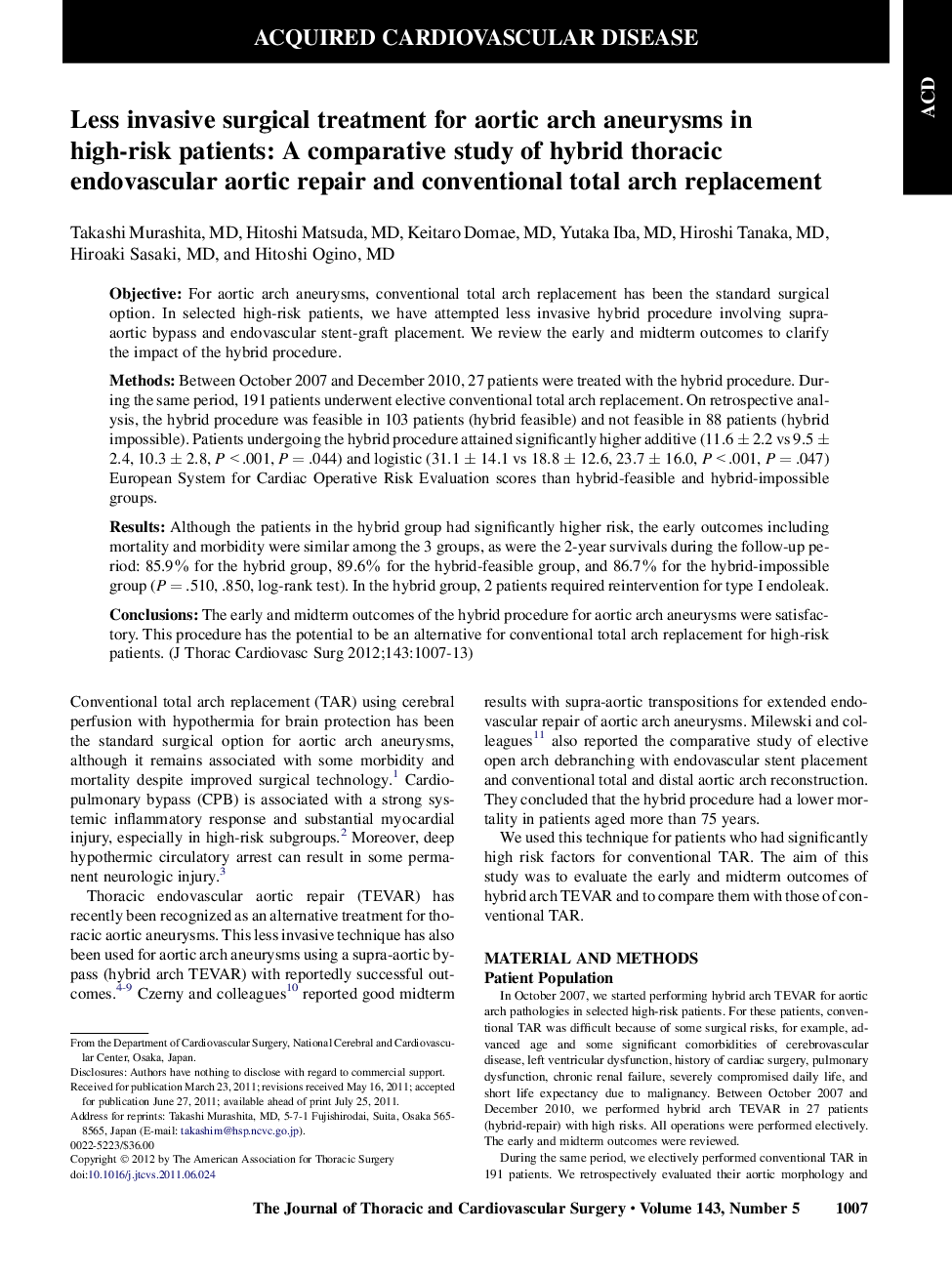| Article ID | Journal | Published Year | Pages | File Type |
|---|---|---|---|---|
| 2982142 | The Journal of Thoracic and Cardiovascular Surgery | 2012 | 7 Pages |
ObjectiveFor aortic arch aneurysms, conventional total arch replacement has been the standard surgical option. In selected high-risk patients, we have attempted less invasive hybrid procedure involving supra-aortic bypass and endovascular stent-graft placement. We review the early and midterm outcomes to clarify the impact of the hybrid procedure.MethodsBetween October 2007 and December 2010, 27 patients were treated with the hybrid procedure. During the same period, 191 patients underwent elective conventional total arch replacement. On retrospective analysis, the hybrid procedure was feasible in 103 patients (hybrid feasible) and not feasible in 88 patients (hybrid impossible). Patients undergoing the hybrid procedure attained significantly higher additive (11.6 ± 2.2 vs 9.5 ± 2.4, 10.3 ± 2.8, P < .001, P = .044) and logistic (31.1 ± 14.1 vs 18.8 ± 12.6, 23.7 ± 16.0, P < .001, P = .047) European System for Cardiac Operative Risk Evaluation scores than hybrid-feasible and hybrid-impossible groups.ResultsAlthough the patients in the hybrid group had significantly higher risk, the early outcomes including mortality and morbidity were similar among the 3 groups, as were the 2-year survivals during the follow-up period: 85.9% for the hybrid group, 89.6% for the hybrid-feasible group, and 86.7% for the hybrid-impossible group (P = .510, .850, log-rank test). In the hybrid group, 2 patients required reintervention for type I endoleak.ConclusionsThe early and midterm outcomes of the hybrid procedure for aortic arch aneurysms were satisfactory. This procedure has the potential to be an alternative for conventional total arch replacement for high-risk patients.
